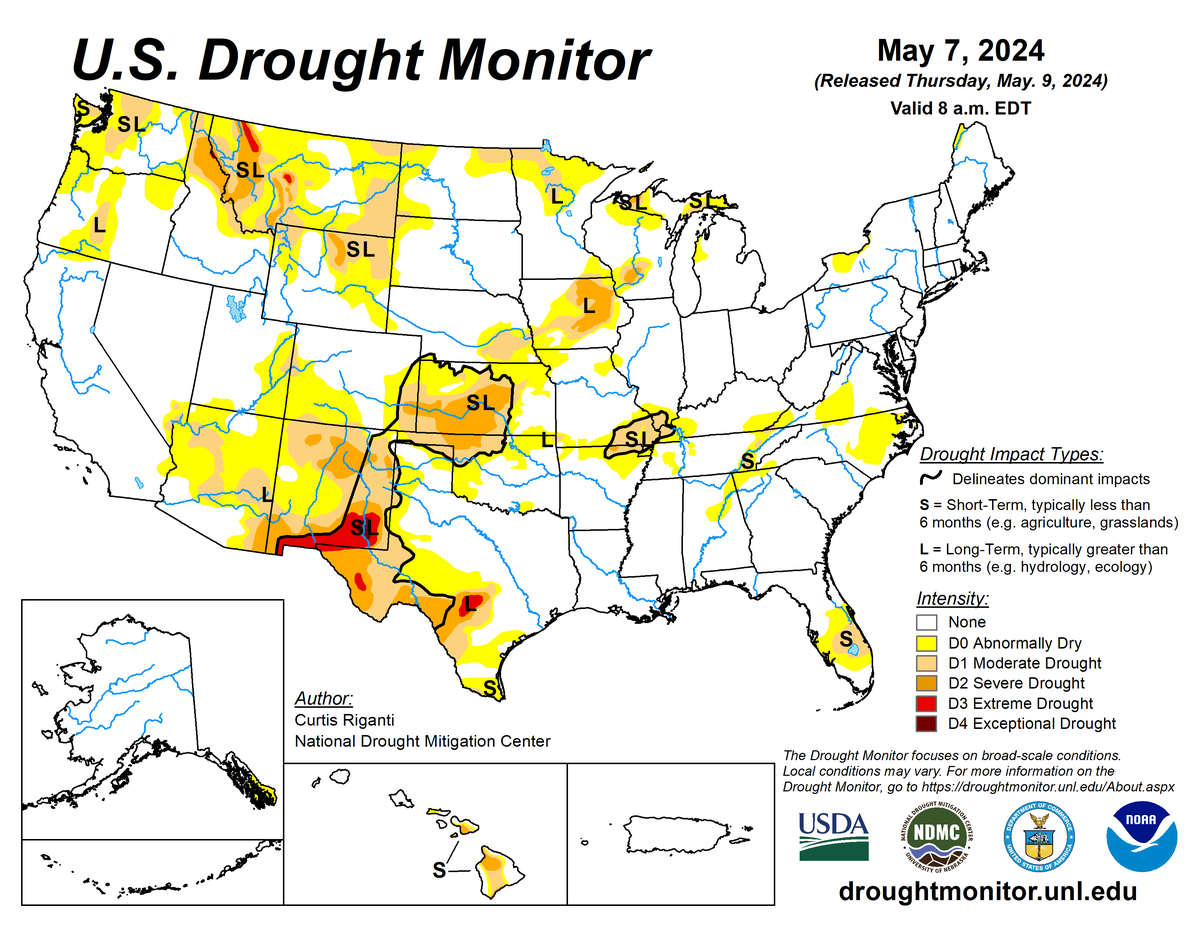
According to the May 7, 2024 U.S. Drought Monitor, moderate to exceptional drought covers 12.7% of the United States including Puerto Rico, a decrease from last week’s 14.2%. The worst drought categories (extreme to exceptional drought) stayed about the same as last week’s 0.7%.
Several Pacific weather systems moved across western and central portions of the contiguous U.S. (CONUS) during this U.S. Drought Monitor (USDM) week (May 1–7). The systems consisted of upper-level closed lows and short-wave troughs of low pressure that were manifested as cold fronts and low-pressure centers at the surface. They tapped Pacific moisture to spread above-normal precipitation across the West Coast, Pacific Northwest, and central to northern Rockies. The systems also tapped Gulf of Mexico moisture to dump above-normal precipitation across large parts of the Great Plains to Mississippi Valley, and generated rounds of severe weather in these areas.
The troughs and fronts kept weekly temperatures below normal across most of the West and northern Plains. An upper-level ridge of high pressure dominated the East Coast. The ridge, along with a southerly flow ahead of the western trough, contributed to warmer-than-normal weekly temperatures for the southern Plains and most of the CONUS east of the Mississippi River. The ridge also inhibited precipitation in the East, except where fronts and surface lows penetrated into the region.
The week ended up drier than normal north of the Ohio River, from the mouth of the Mississippi River to eastern Georgia and Florida, and in scattered areas in the Northeast, as well as large parts of the southwestern U.S. where Pacific and Gulf moisture didn’t reach. The heavy rains contracted drought and abnormal dryness in the Plains to Mississippi Valley and in the Carolinas, while continued dry weather expanded or intensified drought or abnormal dryness over parts of Washington, western parts of the central Plains, parts of Florida, and a few areas in southern Texas and the Mid-Atlantic states.
Nationally, contraction exceeded expansion, so the nationwide moderate to exceptional drought area decreased this week. Abnormal dryness and drought are currently affecting over 50 million people across the United States including Puerto Rico—about 16.1% of the population.

The full U.S. Drought Monitor weekly update is available from Drought.gov.
In addition to Drought.gov, you can find further information on the current drought as well as on this week’s Drought Monitor update at the National Drought Mitigation Center.
The most recent U.S. Drought Outlook is available from NOAA’s Climate Prediction Center and the U.S. Department of Agriculture provides information about the drought’s influence on crops and livestock.
For additional drought information, follow #DroughtMonitor on Facebook and Twitter.



